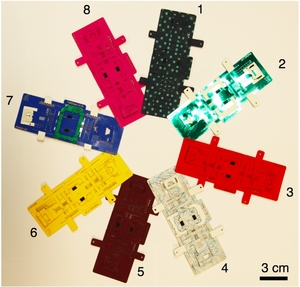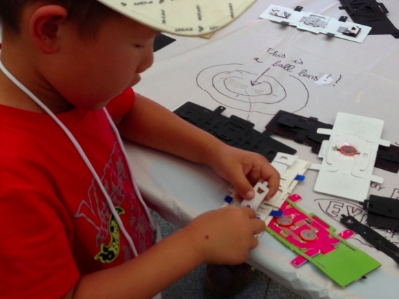We’ve seen pocket watches, pocket cameras, and now with smartphones, we have pocket-sized computers. But how about pocket microscopes for students, scientists, and doctors? A research team at Stanford University created a foldable paper microscope to help equalize science education for less than a dollar.

Just imagine the possibilities for this small origami-based microscope, called the Foldscope. Even doctors and scientists in the poorest areas in the world could use the pocket scope to diagnose common bacteria and pathogens such as malaria. According to Manu Prakash, whose team, Prakash Lab, led the way in creating the microscope, it comprises a simple list of parts, including a sheet of plastic-coated paper, a ball lens, a 3-volt battery, an LED light, a switch, and copper tape.
The printer used to print the instructional lines on the paper also prints the lens, which Prakash compares to a drop of glue (a drop of optical-quality glue), onto the paper. The DIY Foldscope is capable of providing more than 2,000x magnification. Better yet, it takes less than 10 minutes to fold, weighs less than a couple of coins, and is strong enough to survive a harsh drop or being accidentally stepped on.

One of the biggest benefits to this low-cost microscope is the potential for hands-on use in K-12 science classrooms and universities, since many students, even in developed countries, have never used a microscope. It also has applications for general scientific and medical use, along with the community of amateur microscopists across the world.
According to Prakash, the team was on the hunt for 10,000 beta testers as part of its Ten Thousand Microscope Project, which aims to test the Foldscope in various settings and create an open-source field manual. As many as 50,000 units of the foldable microscope will be shipped to testers in 130 countries.
Story via Digital Trends.
Advertisement
Learn more about Electronic Products Magazine





